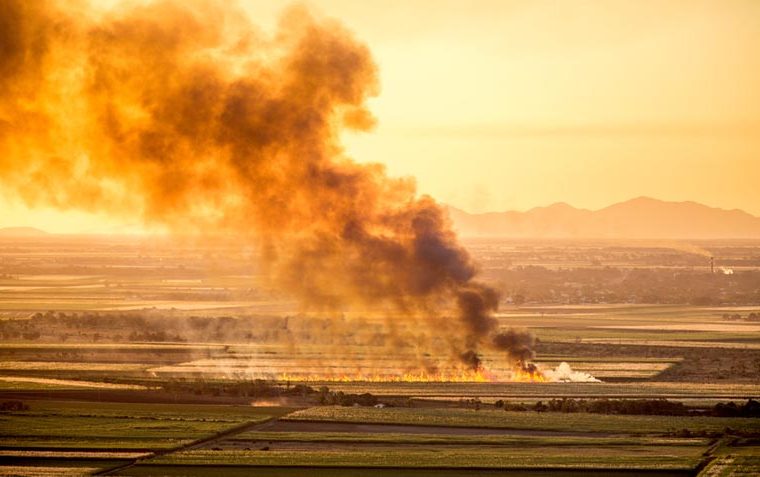- Scientists contributing to the Intergovernmental Panel on Climate Change (IPCC) have published a new report examining the interactions between climate change and land use. Agriculture, forestry, and other land uses are responsible for nearly a quarter of all man-made greenhouse gas emissions. But forests are also one of our planet’s biggest carbon sinks and can contribute to carbon removal, thus constituting a key piece of the land and climate puzzle.
- The report provides a comprehensive look at the forest-related solutions we have, among other land-based responses, that could help us mitigate and adapt to climate change and the possible synergies and trade-offs with other critical land-related issues, including land degradation and desertification and food security.
- We now need the political will and action from governments, the private sector, and consumers to change the way society values forests, to stimulate forest protection, and to embrace sustainable forest management and forest restoration while reversing the pressure on forests. And we need to do so without displacing that pressure to other ecosystems.
- This post is a commentary. The views expressed are those of the author, not necessarily Mongabay.
The vital contribution of forests in protecting biodiversity, regulating the climate, and enhancing human well-being is being recognized as never before.
Forest-related responses to tackling the climate crisis are increasingly being seen as a cost-effective option among nature-based solutions. By protecting existing forests and halting deforestation, we can maintain some of our most important carbon sinks, and by restoring forests we can remove significant quantities of carbon dioxide from the atmosphere.
There is, however, a vast gap between these solutions and reality. Climate change is placing additional stress on forests, and climate change impacts, compounded by trends such as consumption growth, infrastructure expansion, and increased food production, will put additional pressures on land. We are seeing this unfold at this moment in Russia, where record levels of forest fires have sparked fears about an ecological disaster. Or in Guatemala, where rapid deforestation has led to floods and water shortages.
On August 8, scientists contributing to the Intergovernmental Panel on Climate Change (IPCC) published a new report examining the interactions between climate change and land use. Agriculture, forestry, and other land uses are responsible for nearly a quarter of all man-made greenhouse gas emissions. But forests are also one of our planet’s biggest carbon sinks and can contribute to carbon removal, thus constituting a key piece of the land and climate puzzle.

The IPCC Special Report on Climate Change and Land synthesizes and provides the science we need to advance our understanding of what the pressures on land are and the potential and limitations of the response options. The report provides a comprehensive look at the forest-related solutions we have, among other land-based responses, that could help us mitigate and adapt to climate change and the possible synergies and trade-offs with other critical land-related issues, including land degradation and desertification and food security.
We now need the political will and action from governments, the private sector, and consumers to change the way society values forests, to stimulate forest protection, and to embrace sustainable forest management and forest restoration while reversing the pressure on forests. And we need to do so without displacing that pressure to other ecosystems.
Our call to action is challenging, but not impossible. Forest-related solutions are cost effective precisely because we can harness the power of nature to address climate change. But it also requires a fundamental shift in behaviors — in the way we use land for agriculture and in the way people consume and eat.
The Special Report arrives shortly before the UN General Assembly and the Climate Summit in September, and the UN climate talks in December. It is a critical moment to reflect on responses related to forests and assess how they can be incorporated into national agendas and climate action plans of both developing and industrialized countries.

Focus on forests
Most of the pressures on forests come from outside forests and the forestry sector — whether that’s demand for land to grow food, or because of policies and financial systems that don’t take account of the full value of forests. Effective forest protection, then, needs to originate outside forests, too — through improving land management, transforming food systems, and advancing more responsible finance and investment. And it needs to adapt to specific contexts to ensure the most cost-effective options for mitigation and adaptation to climate change, while ensuring synergies with land restoration and food security.
Forests play a key role in the integrated response options that contribute to pathways limiting global warming to 1.5o degrees Celsius. Some of the forest-related solutions have clear win-wins, in the context of a broad range of land-based options. These include forest conservation, sustainable forest management, reducing deforestation and forest degradation, and agroforestry, given their co-benefits for mitigation, adaptation, reversing land degradation and food security.
Expanding tree cover through reforestation and afforestation is expected to have positive benefits for mitigation and adaption and reversing land degradation, but there needs to be a concerted to avoid negative impacts on food security when deployed at a large-scale, as well as social and environmental impacts. Small-scale deployment with the use of best practices in managed landscapes under strong governance could bring some greater co-benefits. And these risks and benefits will require careful assessment depending on the context.

In addition, the potential of forest and ecosystems restoration, while not fully analyzed in the report, has taken center stage recently. For example, a recent study, based on different type of assumptions, has shown the technical potential for tree restoration to be as high as 900 million hectares (about 2.2 billion acres), though it is important to note that there is a large gap between the technical potential and the actual feasibility, and several barriers will have to be overcome. Another recent study found that the world’s largest carbon sinks are located in young forests regrown on former agricultural or deforested areas.
The IPCC Special Report synthesizes our scientific knowledge about the potential of different forest-related responses in the context of integrated response options. But as critical as it is to take stock of our current knowledge, it is just as important to translate this knowledge into action, and actions to protect and restore forests will depend on collaboration between many actors — governments, donors, local communities, farmers, and the private sector.
These actions have the potential to deliver significant benefits under approaches to manage whole landscapes or jurisdictions in a sustainable way. And these approaches require meaningful partnerships between governments, investors, and private companies with the close involvement of local farmers and communities.
It is now time to scale this up and put science into action.

CITATIONS
• Bastin, J. F., Finegold, Y., Garcia, C., Mollicone, D., Rezende, M., Routh, D., … & Crowther, T. W. (2019). The global tree restoration potential. Science, 365(6448), 76-79. doi:10.1126/science.aax0848
• Blanco G., R. Gerlagh, S. Suh, J. Barrett, H.C. de Coninck, C.F. Diaz Morejon, R. Mathur, N. Nakicenovic, A. Ofosu Ahenkora, J. Pan, H. Pathak, J. Rice, R. Richels, S.J. Smith, D.I. Stern, F.L. Toth, and P. Zhou. (2014). Drivers, Trends and Mitigation. In: Climate Change 2014: Mitigation of Climate Change. Contribution of Working Group III to the Fifth Assessment Report of the Intergovernmental Panel on Climate Change [Edenhofer, O., R. Pichs-Madruga, Y. Sokona, E. Farahani, S. Kadner, K. Seyboth, A. Adler, I. Baum, S. Brunner, P. Eickemeier, B. Kriemann, J. Savolainen, S. Schlömer, C. von Stechow, T. Zwickel, & J.C. Minx (eds.)]. Cambridge University Press, Cambridge, United Kingdom and New York, NY, USA.
• Pugh, T. A., Lindeskog, M., Smith, B., Poulter, B., Arneth, A., Haverd, V., & Calle, L. (2019). Role of forest regrowth in global carbon sink dynamics. Proceedings of the National Academy of Sciences, 116(10), 4382-4387. doi:10.1073/pnas.1810512116
Pablo Pacheco is Global Forest Lead Scientist for WWF.
FEEDBACK: Use this form to send a message to the author of this post. If you want to post a public comment, you can do that at the bottom of the page.













